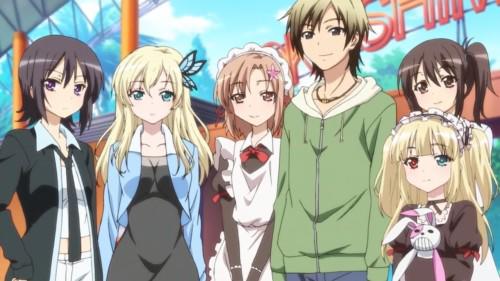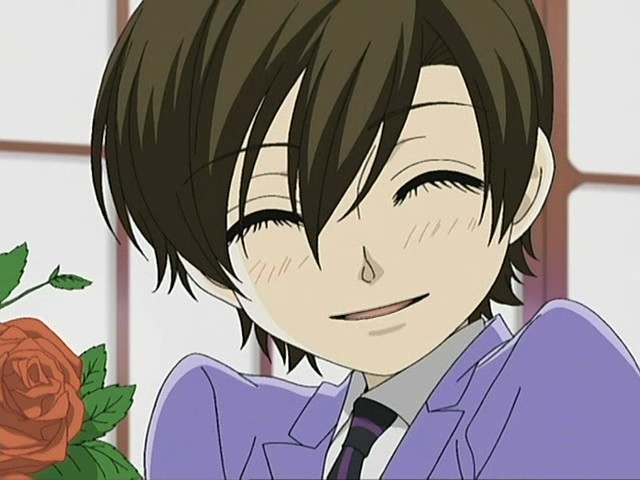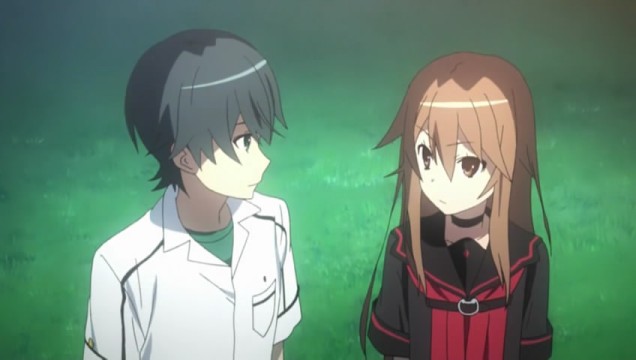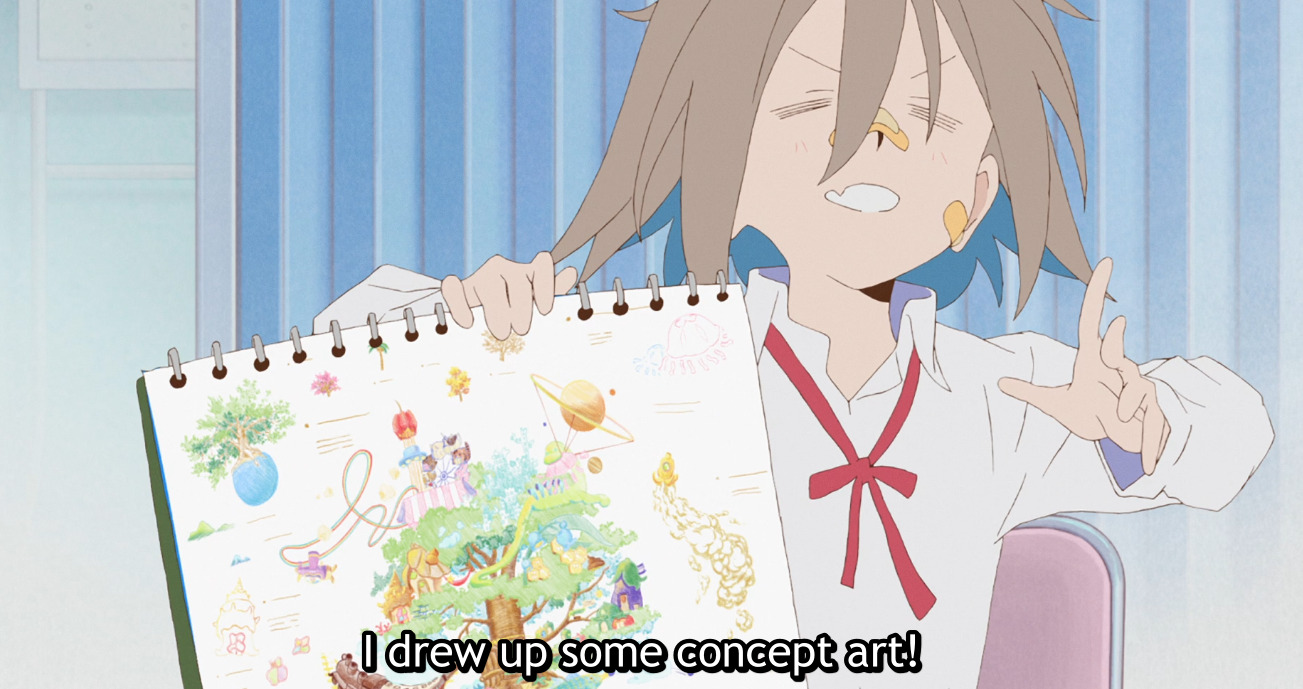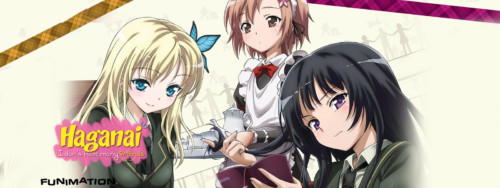
- Sena Kashiwazaki, an arrogant blonde who enjoys playing erotic dating games.
- Kobato Hasegawa, Kodaka’s younger sister who is obsessed with a anime Iron Necromancer.
- Yukimura Kusunoki, who wants to become the perfect man and serves Kodaka similar to how a samurai would serve a lord.
- Rika Shiguma, is a girl genius with a perverted streak.
- Maria Takayama is an immature 10-year-old nun.
The story centers on their antics and awkwardness. Their personalities change slowly. Each episode represents a single day for the most part. Many critics point to how the characters feel the same. I disagree. Characterization moves gradually and realistically. People take time to change, which is the entire point of Haganai. The humor wears thin as jokes repeat, but I come to expect this from anime.
Haganai captures a real problem in modern society: disconnect. People struggle to form lasting relationships and often fail to nurture those they have. In the anime, there are many scenes of the gang sitting and doing their own thing. Together, but separate. That is a characteristic of modern relationships. How often do your friends and family sit together but do their own things? Many lament this development; however, these moments of togetherness reveal a deep level of comfort. People can feel comfortable enough to pursue their interests without hiding. As Haganai continues, you can see the level of comfort between the characters grow as they each do their own thing, together. The characters become comfortable with the presence of each other.
The story is an interesting commentary on modern friendship. People have certain ideal expectations of how relationships should be. And these ideals prevent them from seeing the relationships they already have. Simply spending time with someone is a gesture of friendship. Time is the most precious and limited commodity we have. Not every moment needs to be spent engaged. If anything, the quiet, shared moments — moments of connection, not separation — are the true marks of friendship. The characters of Haganai attempt to go out together, only to have the outings fail. The pressure is too high. They have impossible expectations, causing their outings to become disappointments. Expectations sour relationships in addition to outings. Life doesn’t hold up to our ideals and trying to force these ideals creates pressure.In turn, pressure makes relationships prone to failure.
Relationships should be easy and enjoyable. But recent societal pressures make relationships a chore. Recently people focus on making memories as if memories are commodity to hoard. Sitting quietly next to a friend or loved one as they read a book falls outside this drive to collect memories. Never mind the fact these quiet moments can be among the most intimate. Sure, activities are good, but they cannot fill every moment. Busyness makes it hard to enjoy a person. The activity divides your attention. Haganai shows this well whenever the characters attempt their outings. Many of the characters focus on the events of the outing and lose sight as to why they are going in the first place: to practice friendship. Not every activity needs to have a goal. Sometimes, just being there with someone close to you works best.

Let’s return to the anime’s presentation for a moment. Haganai flirts with harem elements and leans on fan-service. Both of which hurts the central themes. Sena’s boob bounce and thigh close ups do little to advance the central idea. Another distraction from the anime’s theme of friends is the scenes between Kodaka and his sister. These scenes are strange for Westerners. Many show Kodaka’s sister Kobato running around nude. Both brother and sister are comfortable with this despite Kobato beginning to show signs of puberty. Although odd, this does serve a purpose for the story. It allows Kodaka play the responsible elder brother well. It makes for an odd, but effective, character development. An interesting scene happens when Kodaka sees his sister run away from Sena and then sees Sena as nude as his sister. His sister’s nudity doesn’t make him blink, but Sena’s makes him turn into the typical blushing anime boy.
While this reveals an interesting take on nudity (and avoids incest issues), the story plays these scenes up too much. At times, they took all of the focus away from the theme of developing connections with people. But then, I’ve come to expect this sort of thing in anime storytelling. At least some of these fan-service scenes developed Kodaka’s character as the responsible elder brother and a respectable guy instead of the usual tired pervert.
The series is frilly but entertaining. The theme of friendship touches on interesting modern commentary….but only touches on it. It gets lost in the comedy antics. Haganai is okay for what it is. I enjoyed the slow character development and subtle changes that build over time. The humor leaves much to be desired, but rare is an anime that doesn’t rub me the wrong way with its humor.
